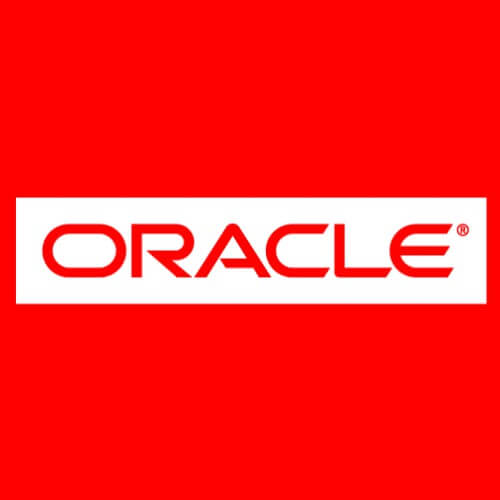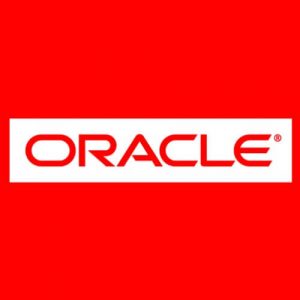D50323 Oracle Database 11g: Security Release 2
565150 Ft – 571500 Ft
Tisztelt Érdeklődő!
Jelenleg a tanfolyamnak nincs konkrét időpontja. Amennyiben érdeklődőként regisztrálja magát, elősegíti
a tanfolyam mielőbbi megszervezését.
Várjuk jelentkezését!
Leírás
Óraszám: 5 nap; 40 tanóra
Minimum létszám: 8 fő
A képzés nyelve: magyar
Tandíj: 509.040 Ft /fő + ÁFA
A képzés rövid leírása:
In this course, you’ll learn how to use Oracle Database features to meet the security, privacy and compliancerequirements of their organization. The current regulatory environment of the Sarbanes-Oxley Act, HIPAA, the UK Data Protection Act and others requires better security at the database level.
Képzési tematika:
Introduction to Database Security
- Fundamental Data Security Requirements
- Data Security Concerns
- Compliance Mandates
- Security Risks
- Developing Your Security Policy
- Defining a Security Policy
- Implementing a Security Policy
- Techniques to Enforce Security
Choosing Security Solutions
- Maintaining Data Integrity
- Protecting Data
- Controlling Data Access
- Oracle Database Vault Overview
- Oracle Audit Vault Overview
- Combining Optional Security Features
- Compliance Scanner
- Enterprise Manager Database Control: Policy Trend
Basic Database Security
- Database Security Checklist
- Reducing Administrative Effort
- Applying Security Patches
- Default Security Settings
- Secure Password Support
- Enforcing Password Management
- Protecting the Data Dictionary
- System and Object Privileges
Auditing Database Users, Privileges, and Objects
- Monitoring for Suspicious Activity
- Standard Database Auditing
- Setting the AUDIT_TRAIL
- Specifying Audit Options
- Viewing Auditing Options
- Auditing the SYSDBA Users
- Audit to XML Files
- Value-Based Auditing
Auditing DML Statements
- Fine-Grained Auditing (FGA)
- Using the DBMS_FGA Package
- FGA Policy
- Triggering Audit Events
- Data Dictionary Views
- DBA_FGA_AUDIT_TRAIL
- Enabling and Disabling an FGA Policy
- Maintaining the Audit Trail
Using Basic User Authentication
- User Authentication
- Protecting Passwords
- Creating Fixed Database Links
- Encrypting Database Link Passwords
- Using Database Links without Credentials
- Using Database Links and Changing Passwords
- Auditing with Database Links
- Restricting a Database Link with Views
Using Strong Authentication
- Strong Authentication
- Single Sign-On
- Public Key Infrastructure (PKI) Tools
- Configuring SSL on the Server
- Certificates
- Using the orapki Utility
- Using Kerberos for Authentication
- Configuring the Wallet
Using Enterprise User Security
- Enterprise User Security
- Oracle Identity Management Infrastructure: Default Deployment
- Oracle Database: Enterprise User security Architecture
- Oracle Internet Directory Structure Overview
- Installing Oracle Application Server Infrastructure
- Managing Enterprise User Security
- Creating a Schema Mapping Object in the Directory
- Creating a Schema Mapping Object in the Directory
Using Proxy Authentication
- Security Challenges of Three-Tier Computing
- Common Implementations of Authentication
- Restricting the Privileges of the Middle Tier
- Authenticating Database and Enterprise Users
- Using Proxy authentication for Database Users
- Proxy Access Through SQL*Plus
- Revoking Proxy Authentication
- Data Dictionary Views for Proxy Authentication
Using Privileges and Roles
- Authorization
- Privileges
- Benefits of Roles
- CONNECT Role Privileges
- Using Proxy Authentication with Roles
- Creating an Enterprise Role
- Securing Objects with Procedures
- Securing the Application Roles
Access Control
- Description of Application Context
- Using the Application Context
- Setting the Application Context
- Application Context Data Sources
- Using the SYS_CONTEXT PL/SQL Function
- PL/SQL Packages and Procedures
- Implementing the Application Context Accessed Globally
- Data Dictionary Views
Implementing Virtual Private Database
- Understanding Fine-Grained Access Control
- Virtual Private Database (VPD)
- How Fine-Grained Access Control Works
- Using DBMS_RLS
- Exceptions to Fine-Grained Access Control Policies
- Implementing a VPD Policy
- Implementing Policy Groups
- VPD Best Practices
Oracle Label Security Concepts
- Access Control: Overview
- Discretionary Access Control
- Oracle Label Security
- How Sensitivity Labels are Used
- Installing Oracle Label Security
- Oracle Label Security Features
- Comparing Oracle Label Security and VPD
- Analyzing Application Needs
Implementing Oracle Label Security
- Implementing the Oracle Label Security Policy
- Creating Policies
- Defining Labels Overview
- Defining Compartments
- Identifying Data Labels
- Access Mediation
- Adding Labels to Data
- Assigning User Authorization Labels
Using the Data Masking Pack
- Understanding Data Masking
- Data Masking Pack Features
- Identifying Sensitive Data for Masking
- Types of Built-in Masking Primitives and Routines
- Data Masking of the EMPLOYEES Table
- Implementing a Post-Processing Function
- Viewing the Data Masking Impact Report
- Creating an Application Masking Template by Exporting Data Masking Definitions
Encryption Concepts
- Understanding Encryption
- Problems that Encryption Solves
- Encryption is not Access Control
- What to Encrypt
- Data Encryption Challenges
- Storing the Key in the Database
- Letting the User Manage the Key
- Storing the Key in the Operating System
Using Application-Based Encryption
- DBMS_CRYPTO Package Overview
- Using the DBMS_CRYPTO Package
- Generating Keys Using RANDOMBYTES
- Using ENCRYPT and DECRYPT
- Enhanced Security Using the Cipher Block Modes
- Hash and Message Authentication Code
Applying Transparent Data Encryption
- Transparent Data Encryption (TDE)
- Creating the Master Key
- Opening the Wallet
- Using Auto Login Wallet
- Resetting (Rekeying) the Unified Master Encryption Key ** 11.2 **
- Using Hardware Security Modules
- TDE Column Encryption Support
- Creating an Encrypted Tablespace
Applying File Encryption
- RMAN Encrypted Backups
- Oracle Secure Backup Encryption
- Creating RMAN Encrypted Backups
- Using Password Mode Encryption
- Restoring Encrypted Backups
- Data Pump Encryption
- Using Dual Mode Encryption
- Encrypting Dump Files
Oracle Net Services: Security Checklists
- Overview of Security Checklists
- Securing the Client Computer
- Configuring the Browser
- Network Security Checklist
- Using a Firewall to Restrict Network Access
- Restricting Network IP Addresses: Guidelines
- Configuring IP Restrictions with Oracle Net Manager
- Configuring Network Encryption
Securing the Listener
- Listener Security Checklist
- Restricting the Privileges of the Listener
- Moving the Listener to a Nondefault Port
- Preventing Online Administration of the Listener
- Using the INBOUND_CONNECT_TIMEOUT Parameter
- Analyzing Listener Log Files
- Administering the Listener Using TCP/IP with SSL
- Setting Listener Logging Parameters
Belépési feltételek:
Audience
- Administrator
- Database Administrators
- Security Administrators
- Support Engineer
- System Analysts
- Technical Administrator
Igazolás: Tanúsítvány
További információk
| Indulás | 2019.11.07., 2020.01.08., 2020.04.16. |
|---|


